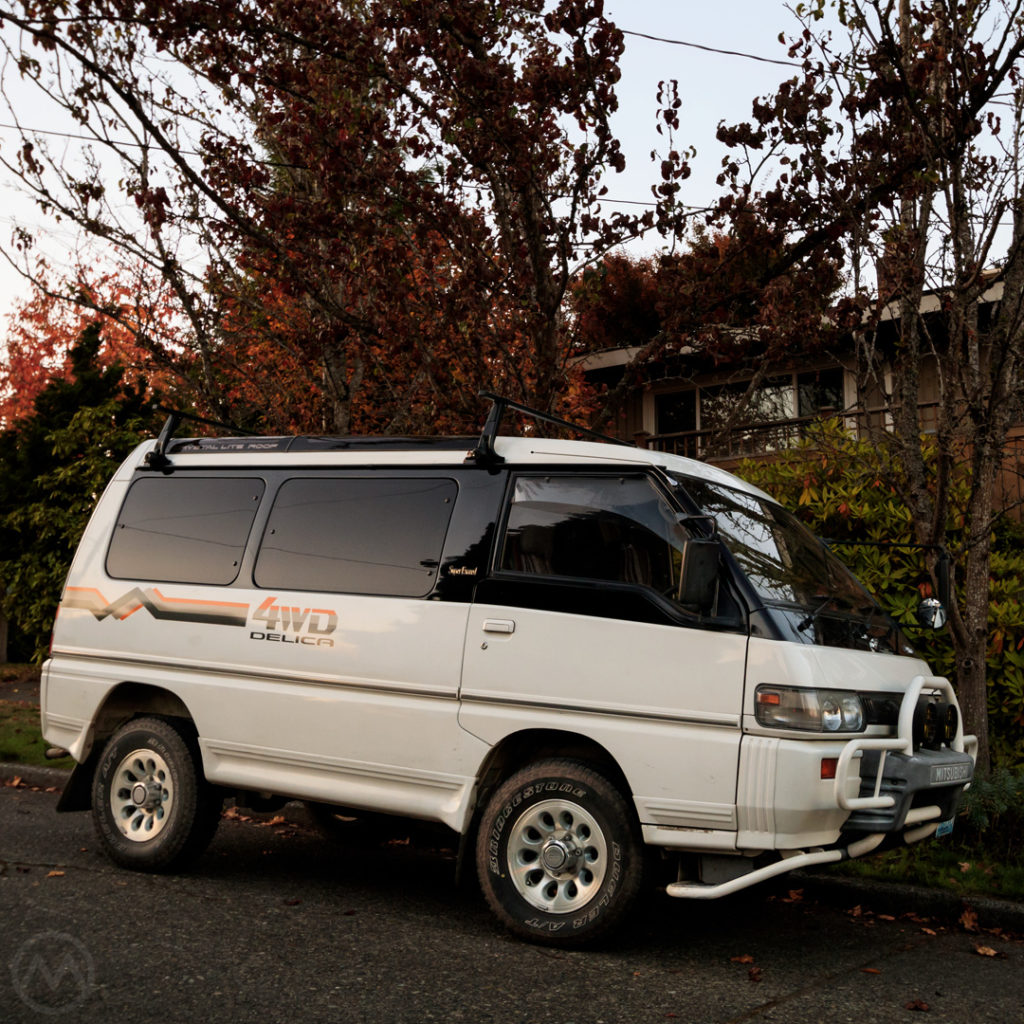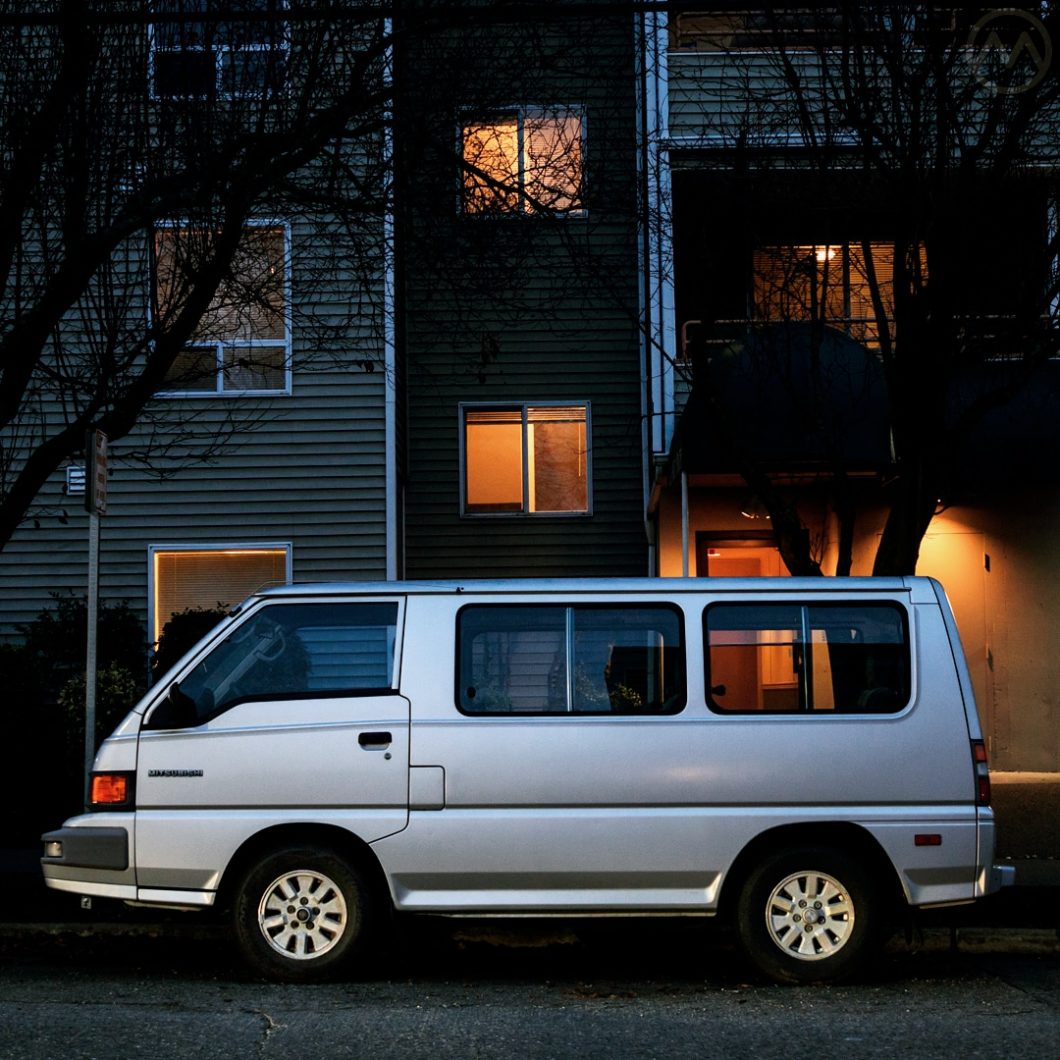The Mitsubishi Delica name dates back to 1968, but it was in the 1980s that the van became famous as a go-anywhere overlander.
Today, 1980s and 1990s JDM AWD Diesel Delicas are popular enough in parts of the United States and Canada to be a daily sight. They’re highly prized too – commanding big prices but also offering big capabilities.
This van is a Delica of a sort – but it’s a less famous version. It wasn’t called Delica at the dealership. Instead, this is a rare U.S.-spec Mitsubishi Wagon, a bit player in the eighties minivan wars that began with the introduction of Chrysler’s minivans in November, 1983.
As such, it was aimed more at replacing rusty Country Squires than hitting the trailhead or camping in Moab.
After years of sometimes contentious partnership with Chrysler, Mitsubishi launched its own U.S. distribution network in 1982. It’s first U.S. products were the Cordia and Tredia. It quickly expanded both the product line (Starion, Montero) and it’s geographic reach – going national right around the time Chrysler struck gold with the minivans.
The Minivan Wars
Even before they were on sale, every manufacturer was aware of Chrysler’s new idea.
When they debuted, suddenly every manufacturer had to have their own minivan. Only VW had a real rival already – the existing Vanagon. The Vanagon continued a long tradition, but Chrysler’s cheaper, more car-like minivans cut deep into Vanagon sales.
Toyota was the first to respond by bringing in the Japanese Domestic Market (JDM) LiteAce as the “Toyota Van.”
GM and Ford followed in 1985 with the Chevy Astro/GMC Safari and Ford Aerostar – both more truck-like vans cooked up quickly.
Mitsubishi and Nissan reasoned that they could do exactly what Toyota had done with JDM vans of their own. Though considered large in Japan, these vehicles were appreciably smaller than U.S. domestic full-size vans.
Nissan adapted its U.S. van from the small-ish C22 Vanette – shoehorning in a 2.4L four where it was not meant to go to meet U.S. demands. That would ultimately prove a very costly mitake, but that’s a story for another day.
Mitsubishi waited until the fall of 1986 and used the third-gen Delica, much larger than the Vanette. The redesigned Delica was new in the summer of ‘86 and had a U.S. version (more or less) baked in from the start.
The U.S. Version
The design of the 3rd-gen Delica was called “Soft Cube” by Mitsubishi. Its lines were “softer” than the 1979-85 truck, but mostly because the 1979-85 version looked like it was designed with a cast iron T-square. In the 1980s sides were flat and JDM vans were aggressively square. The Delica was no exception.
For the USA, the Delica gained a huge impact bumper in front but few other real changes. The trucks were sold here beginning in 1987 in two forms – as the “Wagon,” a luxurious passenger van, or the much rarer “Van,” a commercial panel.
Both were rear-drive and automatic only. They were powered by Mitsubishi’s 4G64 2.4L gas four. That made them slow – 0-60 in 14 seconds – but also kept fuel mileage within range of other, lighter minivans.

At the time there was no market, really, for AWD vans. There had always been 4WD conversions of big Detroit vans, and VW Bus and Vanagon owners loved camping. The kind of campers who’d later find interest in the Delica were not a big group compared to Chrysler’s minivan customers.
With the cost of federalizing individual models quite high and import quotas still in place, Mitsubishi felt their efforts would be best spent on the minivan market. That was the widest possible audience but that vision didn’t include the AWD or Diesel Delicas.
Less “Mini,” More “Van”
The big “Wagon” transmitted every bump in the road to the driver, but was a comfortable and luxurious place to be for a van. It generally got good reviews. Praise centered around its precise steering, comfy seats, huge room for a 175” (4.4M) long vehicle, and great visibility.
It stood up well as a smaller, more-efficient competitor to larger conversion vans, but it was more “van” than “mini.”
But Mitsubishi gradually discovered what Volkswagen (and Detroit) already knew: U.S. customers were resistant to forward-control vans. In these trucks you sit high up above or in front of the front axle. That makes getting in and out tougher and puts you in the impact zone in a crash.
They were seen as old fashioned and, as British writers often labeled them, “Vans with windows.” They were smaller vans, sure, but not “minivans” in the modern sense.
Though Toyota was fairly successful with the LiteAce van (and a commercial version), it too understood the forward-control limitation. The “Toyota Van” was eventually replaced with the more minivan-like Toyota Previa.
Meanwhile, forward control Mitsubishi-Fuso commercial trucks were taking the U.S. truck market by storm in the mid eighties. Mitsubishi hoped the commercial “Van” would find favor with buyers of larger domestic commercial vans like the Econoline, Vandura, and Ram. But Fuso trucks were sold through an entirely different channel than Mitsubishi’s cars, with little overlap.
16,485 “Wagons” and 6,542 “Vans” were sold over four and a half years before Mitsibushi pulled the plug on both models in the fall of 1990.
Epilogue in British Columbia
Years later, in the early 2000s, AWD Delicas, a minimum of 15 years old, started trickling into British Columbia where they were used for surfing in Tofino and skiing in Whistler. This is where the JDM Delica craze – very much with us today – began in North America, spreading to the western U.S. in the 2010s as the vehicles became U.S. legal at 25.
You might think Nissan Skyline GT-Rs or Nissan Figaros would be the most popular JDM cars in America, but you’d be wrong – after Kei trucks, it’s overlanding Delicas buyers want most.


My parents had one, a mitsubishi van it lasted from 1989 until 2000ish. We took it everywhere. i desperately wanted it but my parents weren’t going to fix it and hold onto it for another 6 years.
Mitsubishi sold the rights to their motor to Lee Iaccoca which stopped the sale of the “van wagon” for what I believe was the 1991 model year.